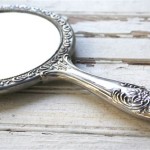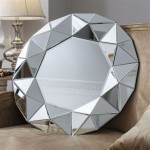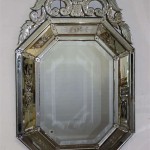Rear View Mirror History: A Journey Through Engineering and Safety
The rear view mirror, an indispensable component of modern vehicles, has a rich history marked by continuous advancements in technology and safety. From its humble beginnings to the sophisticated systems we have today, this article takes a comprehensive look at the evolution of the rear view mirror and its impact on driving.
The Early Days: Simple and Functional
The earliest known rear view mirrors were rudimentary devices, often consisting of a simple mirror attached to the windshield or dashboard. These mirrors provided a limited field of view and were often difficult to adjust. However, they marked the beginning of a journey towards enhanced visibility and safety on the road.
Swinging Mirrors: A Step Towards Convenience
In the early 20th century, swinging mirrors emerged as a more convenient solution. These mirrors were mounted on a swivel joint, allowing drivers to easily adjust the angle of the mirror to their preference. While swinging mirrors offered improved visibility, they were still prone to vibrations and could be easily knocked out of position.
Fixed Mirrors: A Leap Towards Stability
In the 1930s, fixed rear view mirrors began to gain popularity. These mirrors were permanently mounted to the vehicle's frame, providing a more stable and reliable view of the road behind. Fixed mirrors also allowed for larger mirror sizes, further enhancing visibility.
Day/Night Mirrors: Addressing Glare
As the number of vehicles on the road increased, drivers faced the challenge of glare from headlights. To address this issue, day/night mirrors were introduced in the 1950s. These mirrors featured a lever that allowed drivers to switch between a reflective surface for daytime use and a tinted surface for nighttime use, reducing glare and improving visibility.
Wide-Angle Mirrors: Expanding the Field of View
In the quest for even greater visibility, wide-angle mirrors were developed in the 1960s. These mirrors provided a wider field of view, helping drivers spot potential hazards more easily. Wide-angle mirrors became a standard feature on many vehicles, further enhancing safety on the road.
Anti-Glare Mirrors: A Technological Leap
In recent years, anti-glare mirrors have emerged as a significant advancement in rear view mirror technology. These mirrors utilize sensors to detect and automatically dim the reflective surface when headlights from behind are detected, significantly reducing glare and improving nighttime visibility.
Rear View Camera Systems: The Next Chapter
The latest chapter in the evolution of the rear view mirror is the integration of rear view camera systems. These systems use a camera mounted at the rear of the vehicle to display a live video feed of the area behind the vehicle on a screen mounted inside the cabin. Rear view camera systems provide an incredibly wide field of view and eliminate blind spots, making them an invaluable safety feature.
The rear view mirror has come a long way from its humble origins, evolving into a sophisticated and essential safety feature in modern vehicles. From simple mirrors to advanced camera systems, the rear view mirror has played a crucial role in enhancing visibility, reducing glare, and improving overall driving safety.

Who Invented The Rearview Mirror

Rear View Mirrors A Quick Look Back Iron Horse Spares

How The First Rearview Mirror Won Indy 500 New York Times

Infographic 9 History Facts About Rear View Mirrors Fueloyal

History Of Rear View Mirrors In Modern Cars

Rear View Mirror Wikipedia

What Is The History Of Rear View Mirror Did You Know Cars

History Of Rearview Mirrors Fortem

Rolls Royce And Bentley In The Rear View Mirror A History Of Owner S Club By Neely David R City Basement Books

Side View Mirror Wikipedia








